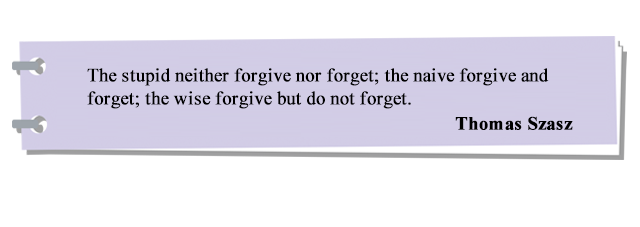

Alice Howland lives an enviable life. She has a successful career as a distinguished professor of cognitive psychology at Harvard. She is physically fit and happily married with three grown children. When she finds herself experiencing some minor but nagging memory lapses such as forgetting words in lectures and conversation and asking the same question repeatedly, she attributes them to too much multitasking and the approach of the menopause. But when she gets utterly lost a few blocks from home during a morning jog, she is alarmed and finally goes to see a neurologist. On 19 January, the day when her mother and sister died in a car accident 32 years ago, she learns that she has an early onset of Alzheimer’s. She is only 50.
Alice is the principal character in Lisa Genova’s debut novel Still Alice, which tells an agonising but engrossing story of a woman’s descent into the netherworld of Alzheimer’s. Although fictional, the book gives a realistic portrayal of how the illness affects its victims, so much so that it has been endorsed by the Alzheimer’s Association as an accurate depiction of the disease. The book was adapted into a film of the same name in 2014 starring Julianne Moore, who won numerous accolades for her role as Alice, including a Golden Globe and an Oscar.
Written from Alice’s point of view, Still Alice takes the reader into Alice’s head to witness those moments when things are obviously not quite right, for example, going to the office in the middle of the night in her nightgown, or walking into her neighbour’s kitchen to make tea. Alice, as well as the reader, begins to realise that her perspective on things is not to be trusted. As the disease progresses, we witness the devastating symptoms of Alzheimer’s grow in frequency, such as when she tries to call her husband with a television remote control and when she forgets the name of her own children. Slowly losing her mind, Alice is shown drifting in an ocean of frustration, confusion, isolation, and paranoia. And we are there, right along with her.
In portraying Alice’s personal struggle with Alzheimer’s, Genova examines the unpredictable effects of the illness on the people around the afflicted person. After Alice is diagnosed with the disease, her colleagues avoid her as if she is infectious. Alice’s husband, John, a cancer cell biologist, resorts to denial. He accepts a job out of state since he can’t bear to watch his “beautiful and brilliant wife” deteriorate into a shell of her former self. Her daughters, Anna and Lydia, set aside their sibling rivalry in their mother’s time of need. Lydia, an aspiring actress who is viewed as the least competent in the family, proves to be the most loving, unafraid to step closer to her mother’s abyss. When Alice can no longer recognise her family—her husband becomes “the man”, Anna becomes “the mother”, Lydia becomes “the actress”—her children choose to cherish their relationship even as it disintegrates, offering to act as her anchor to the world.
While Alice’s family bonds are stronger than ever, every facet of her personal identity is lost in the throes of dementia, beginning with her hard-won achievements as a tenured Harvard professor and research scientist. Her roles as a supportive wife, mother and grandmother, and, ultimately, her self-awareness are also lost to the disease. “Is the part of my brain that’s responsible for my unique ‘me-ness’ vulnerable to this disease?” she asks. “Or is my identity something that transcends neurons, proteins, and defective molecules of DNA? Is my soul and spirit immune to the ravages of Alzheimer’s?” These haunting questions must have run through the minds of many patients with the disease when they are still compos mentis. How many neurons can Alice lose and still be Alice? The question is no less paradoxical than the ship of Theseus.
Alice wears a butterfly necklace passed down by her mother, who once said that butterflies had short yet beautiful lives. “Butterfly” is also the name of a file on her computer that she instructs her future self to open should she ever fail to correctly answer any of the five simple questions: What month is it? Where do you live? Where is your office? When is Anna’s birthday? How many children do you have? The file will provide a step-by-step guide to committing suicide. One year after she sets up the plan, the daily test has totally slipped her mind, but it seems her husband has somehow found out about it. He takes her to an ice cream shop and leads her through the questions in the butterfly test while Alice is licking her chocolate ice cream. When Alice fails to answer any of them, John asks, “Alice, do you still want to be here?” The clueless Alice answers, “Yes. I like sitting here with you. And I’m not done yet,” pleased with herself that she finally has a confident answer.
Alice considers that life is not worth living when the ordeal of her disease exceeds the enjoyment of such pleasures as ice cream. In the final pages of the book, Genova leaves readers a glimpse of light in the darkness. Alice still experiences happiness as she plays with her first grandchild without really knowing who the baby is. She still senses love from Lydia’s acting without understanding a word of her monologue. Memories fade, but the moments of simple joy remain. Clouded by the past, untethered from the present and devoid of any future, Alice is literally living in the moment. If there is any solace to be found, it may lie in the words of the English poet William Blake, “To see a world in a grain of sand and a heaven in a wild flower, hold infinity in the palm of your hand and eternity in an hour.”











